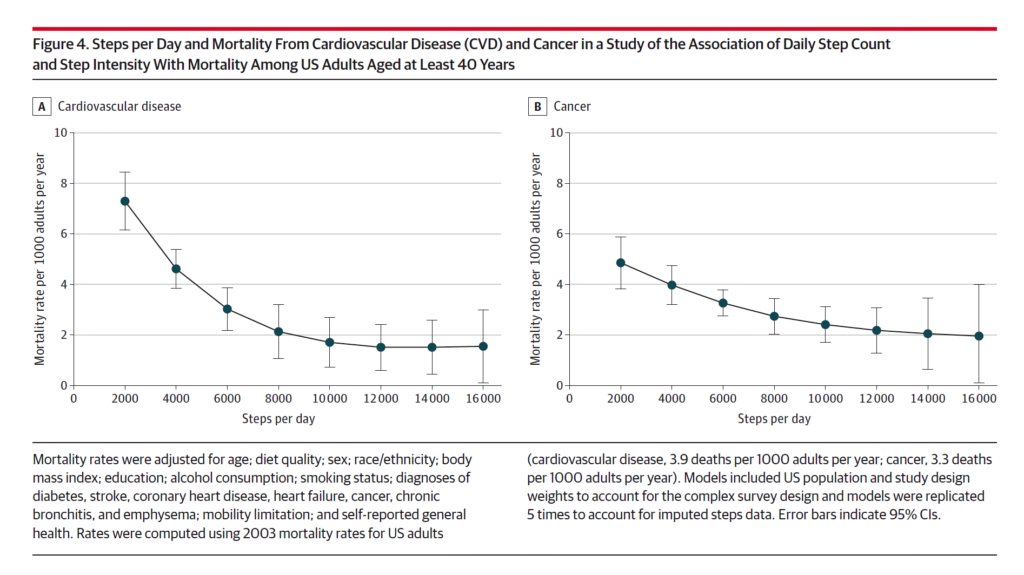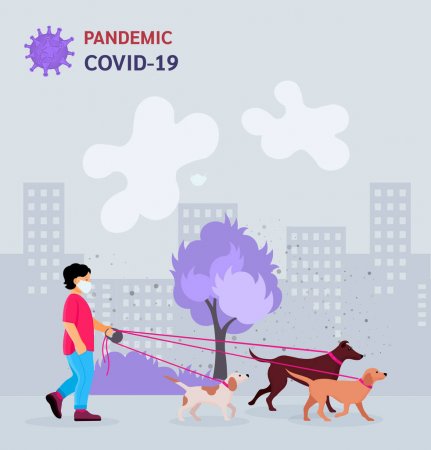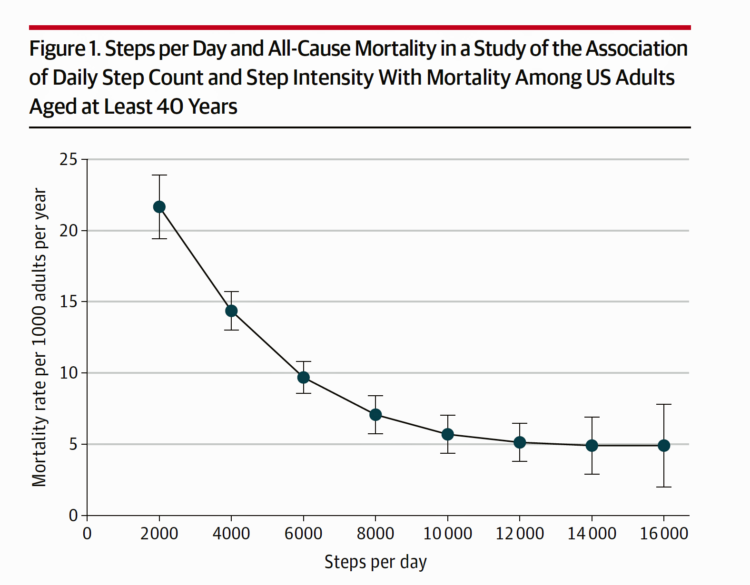 There’s evidence in this week’s JAMA of a dose-response relationship between peoples’ steps and lower mortality.
There’s evidence in this week’s JAMA of a dose-response relationship between peoples’ steps and lower mortality.
In other words: more steps done daily is statistically significantly associated with death from all causes. Furthermore, step intensity didn’t make a difference in mortality rates, shown in the JAMA-published study, Association of Daily Step Count and Step Intensity With Mortality Among US Adults.
The publication of this study is incredibly well-timed given the fact that hundreds of millions of people around the world are in lockdown, #StayHome lifestyles this week, and will be for many weeks to come. Going outside for fresh air and walking, which is free for the doing, is key to maintaining our physical and mental health in shut-in, physical distancing mode.
 The first chart illustrates the overall finding, that more steps up to 10,000 a day reduces the mortality rate. Note the diminishing returns happen around 10,000 steps a day…about the recommended number popular fitness trackers often promote.
The first chart illustrates the overall finding, that more steps up to 10,000 a day reduces the mortality rate. Note the diminishing returns happen around 10,000 steps a day…about the recommended number popular fitness trackers often promote.
The second chart dives into the data for heart disease and cancer, showing that more steps — again, the 10,000 goal — reduces death rates for both cardiac health and for deaths from cancers.
This is a useful proof-point for recommending exercise-as-medicine.
 Figure 2, the third chart, examines steps per day and mortality by gender and age. Clearly, for both men and women, mortality fell, with the 10,000 point on the x-axis flattening out for women and the 12,000 step count for men.
Figure 2, the third chart, examines steps per day and mortality by gender and age. Clearly, for both men and women, mortality fell, with the 10,000 point on the x-axis flattening out for women and the 12,000 step count for men.
In the lower sector of Figure 2, you see the age story for the dose-response for step counts for people 65 and over, 50 to 64, and under 50 years of age. Older people benefit greatly from doing up to 8,000 steps a day.
As a sidebar, there is solid evidence regarding the benefits of pets for older people, especially when considering the daily ritual of walking a dog. [Caveats — obedience training is key for dogs walked by older people to lower risk of fractures due to falls]. And, here’s advice from the American Kennel Club asking and answering, “Can I Walk My Dog During a Pandemic?”
FYI, the lead author, Dr. Pedro Saint-Maurice, is affiliated with the National Cancer Institute (NCI) in the National Institutes of Health (NIH). Other authors work with the NCI at NIH; CDC’s National Center for Chronic Disease Prevention and Health Promotion; the National Institute on Aging; and, the University of Tennessee Knoxville’s Department of Kinesiology, Recreation and Sport Studies.
Health Populi’s Hot Points: There is a popular meme going around the interwebs about the “COVID-19” akin to the “Freshman 5” or Freshman 15 pounds students gain when going off to college — consuming beer, pizza, and any number of favorite cravings living away from home for the first time in dorms, apartments and “Greek Life” sororities and fraternities.
 While The Atlantic noted that people were buying dumbbells like toilet paper in the C19 pandemic consumer market, “take a hike” is a common exercise prescription these days as long as people continue to practice physical distancing.
While The Atlantic noted that people were buying dumbbells like toilet paper in the C19 pandemic consumer market, “take a hike” is a common exercise prescription these days as long as people continue to practice physical distancing.
Here are some useful resources on the evidence for exercise during our C19 #AloneTogether mode and digital health developments for home-based exercise and gym concepts from some of my favorite sources…
In MobiHealthNews, Fitness Goes Digital During COVID-19 Crisis
New York Times, Fitness Enthusiasts Think Outside the Gym During Coronavirus
CBS News, These Fitness Studios Are Live-Streaming Workout Classes For Free During the Coronavirus Outbreak including links from Blink Fitness, Orangetheory, Peloton and others
Finally, from my favorite community-based wellness touchpoint, the YMCA, this link to YMCA 360 offering online fitness classes.





 Thank you FeedSpot for
Thank you FeedSpot for